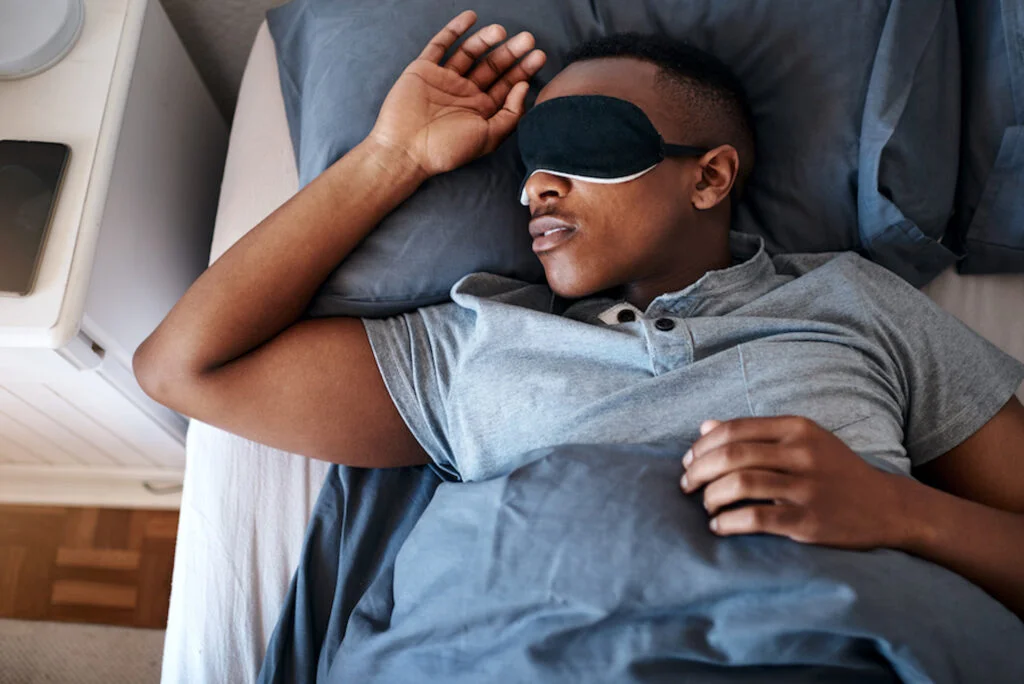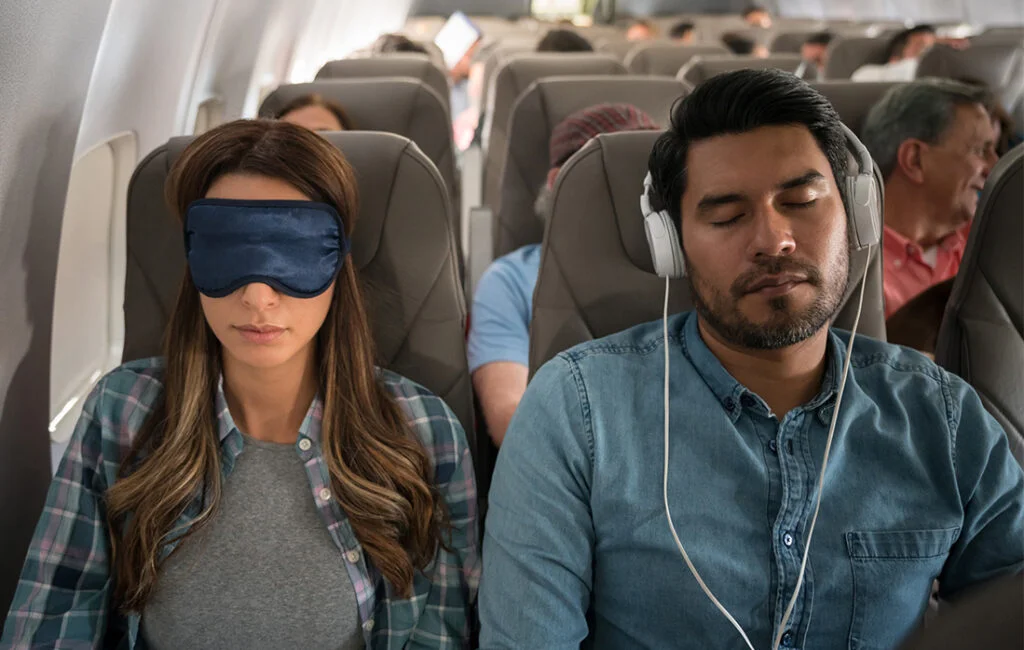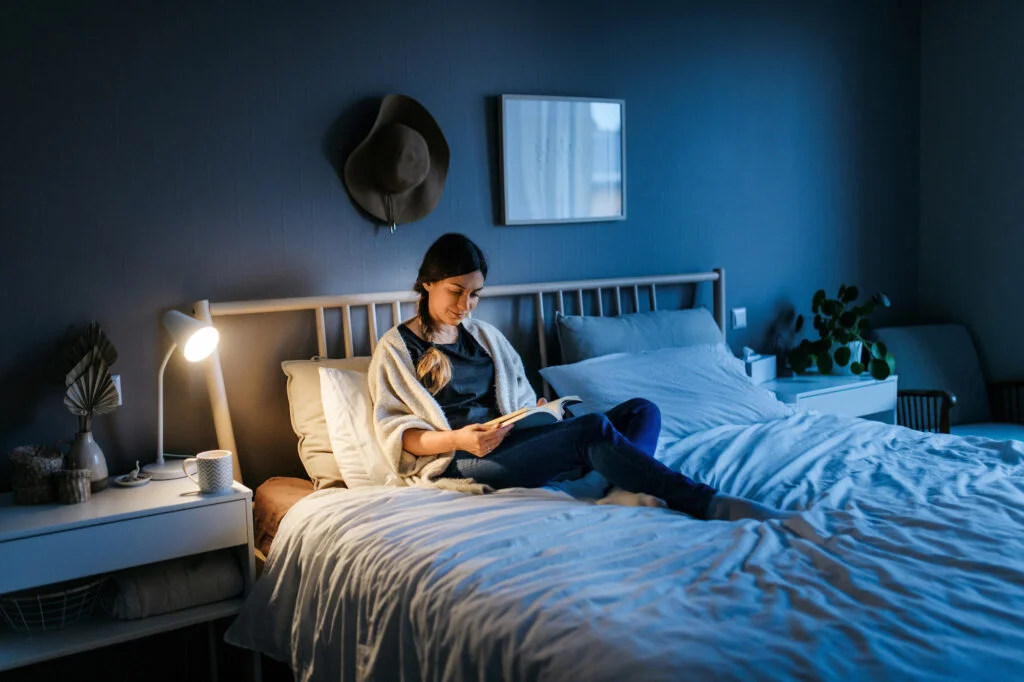
We know how beneficial sleep masks can be overnight, but here’s a quick refresher: According to Dr. Jay Olson, a Postdoctoral Fellow at the University of Toronto who studies sleep, circadian rhythms, and light exposure, “Keeping a dark environment is an important aspect of sleep hygiene that directly contributes to improved sleep quality and duration.” So much so that for many people, sleep masks and blackout curtains are non-negotiables that help them accomplish all of the above night after night.
And while the humble sleep mask can do the heavy lifting to block light, keep your circadian rhythm in check, and boost your sleep quality, new research shows that sleep masks can do far more. More specifically, sleep masks can also improve learning, alertness, memory, and reaction time.

The Sleep Mask Study
In a study published in the journal Sleep, researchers conducted two experiments. Experiment 1 included 89 participants aged 18–35 who wore an eye mask as they slept every night for a week in their own homes, followed by one week of sleeping without a mask, again from the comfort of their own homes. Experiment 2 included 33 participants aged 18–35 who slept with a sleep mask for two nights, followed by two nights sleeping in eye masks with cutouts, so there was no light blocking. Both groups participated in 2 days of lab testing and self-reported questionnaires immediately after the sleep trial.
1. Sleep Masks Improve Learning and Memory
By assessing the results of a word-pair associate task, researchers found that participants from both groups who wore the eye mask performed better in terms of learning new information. And not only did the word-pair association task show that sleep masks enhanced learning, but it also showed that eye masks had a direct and positive effect on memory formation. The researchers ultimately discovered that the cognitive improvements and “the benefit to memory [were] predicted by time spent in slow-wave sleep while wearing the mask.”
2. They Also Improve Reaction Time and Alertness
The study further revealed that by blocking ambient light with sleep masks, participants had significantly faster reaction times. And while the participants didn’t note a difference in alertness on self-reported questionnaires, testing showed marked improvements in psychomotor vigilance tests.
3. Sleep Masks Keep Our Circadian Rhythms Regulated
Jay Olson tells us that “Light exposure is one of the strongest modulators of circadian rhythms,” and sleep masks can play a role in regulating our circadian rhythms. “Light in the evening and early part of the night can delay our circadian rhythms, making it harder to fall asleep, whereas light exposure in the morning advances our circadian rhythms, making it harder to stay awake the following night.”

4. Bonus for People Who Want to Be More Alert in the Evening
Olson adds that while ambient light can also impair our sleep, sleep masks can mitigate those effects, and they may be particularly important for lion or lark chronotypes who want to be more alert at night. “Depending on the environment, light exposure from street lights or store signs can impair our sleep if we’re not wearing a sleep mask,” he says. “Moreover, sleep masks help prevent the morning light exposure from waking us up and shifting our body clock earlier.”
Best Practices For Sleep Masks
For those who have trouble sleeping with a mask, Olson suggests doing what you can to keep your sleep environment as dark as possible. In that case, blackout curtains could be a good pinch hitter. Ideally, they should be thick enough that you can’t see any light through them. He also suggests putting tape over other light sources, like indicator lights on a TV or computer.
Above all else, Olson suggests finding a comfortable sleep mask. He notes that could mean different things to different people, but the bottom line is to make sure no light slips through the bottom part of the mask (by the nose) when wearing it. He adds, “You don’t need to splurge on an expensive mask. Sleep masks are all very similar, so find one that is comfortable to wear, even if it comes from the dollar store.”

























